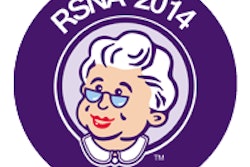
I grew up in the Superman era -- mostly watching reruns, but I couldn't wait to see the latest adventures of Superman each week. I always wanted to be like Clark Kent, the "mild-mannered reporter for a great metropolitan newspaper," so I could fight the never-ending battle for truth, justice, and the American Way.
But somewhere along the way, the truth got distorted, justice became available only to the rich, and the American Way gave way to greed. My journalism degree might have taught me how to write, but I was still much closer to Jimmy Olsen than I ever was to Clark Kent, and my 1970s idealism went out the window almost as quickly as Superman did, swiftly replaced by skepticism.
 PACS consultant Michael J. Cannavo.
PACS consultant Michael J. Cannavo.I always believed the truth would set you free; it says so right there in the Bible in John 8:32: "Then you will know the truth, and the truth will set you free." But has it? Will it? How many $5,000 market research reports would be sold if they said, "U.S. PACS market in a decline," instead of, "The market for PACS and cardiovascular information systems (CVIS) is forecast to undergo impressive growth from 2012 to 2018"?
What vendor will run out and spend $2,500 on report that says they are No. 9 out of 13 vendors if not simply to refute the data? Really? Can I have a sip of that Kool-Aid, Reverend Jones? Or a glass? Maybe the entire pitcher if no one else wants any.
Sure, PACS companies are putting out press releases saying they are doing great at this and that and making money in the process. I am sure they are, but rest assured they aren't doing it by selling PACS alone. I've been saying for years that PACS is a commodity market, and it is even more so now. PACS is an ink-jet printer sold at a loss so the vendor can make it up on sales of ink cartridges; PACS sales today exist solely to serve as a conduit for service agreements. These agreements provide a huge part of a company's recurring revenue and up to 75% of the net profit. But more on that later.
I did an exercise recently where the company took the posture that once you use their technology you will stay with them forever. The actual statement they made was, "The safest way to ensure customer renewal is to drive adoption. Customers will not abandon technology they are using on a daily basis." In response to that statement, I quoted Michael Menard from "3 Steps to Effective Technology Adoption," where Menard said, "Technology is at best 10% of the value equation -- the other 90% is based on the human factor."
I went on to add this corollary to the company's initial statement: "Customers will not abandon technology they are using on a daily basis; however, they may abandon a vendor after the return on investment (ROI) period if they feel the company isn't a partner whose products, services, and vision fit with their big picture, and if they feel the vendor doesn't offer them a good overall value." That was on page two of the 19-page PowerPoint I developed. Sadly, I am confident that the company never got beyond page two, as it didn't fit with their corporate concept of reality.
So who is right? Both of us are. No one will ever give up PACS technology. PACS is here to stay; giving it up would be like going back to a horse and buggy instead of a new Lexus. It's just not going to happen. What I am seeing more and more of, though, are customers switching vendors after the initial ROI period has been met. Let's get rid of the Honda, look closely at the Lexus, and see if the budget can support a BMW.
Not the time for change
Keep in mind this is not the right time to be changing horses midstream. The IT department is up to its ears in work related to achieving meaningful use, integrating various clinical systems to create an electronic health record (EHR), implementing ICD-10 systems, dealing with mergers and acquisitions, and a host of other tasks. Bringing up a new PACS, including the aggravation and cost of migrating seven or more years of data, is not on IT's top 10 or even top 50 list of tasks.
It's also not in most radiology department's budgets either, which has led PACS companies to get very creative in financing these deals. Even something as simple as implementing a medical image sharing (MIS) service takes capital and resources, two things that are in short supply nearly everywhere. That said, solutions such as image sharing and vendor-neutral archives (VNAs) are gaining favor, but only because they can show a rapid ROI. A VNA can be fairly IT-intensive, but interest in it is growing because a VNA touches so many departments and offers significant cost savings. Image sharing is low enough in cost and saves enough on full-time equivalents (FTEs) that it, too, goes to the head of the class -- if the IT department can find a slot for it.
Frankly, the fact that end users even consider changing vendors is something that surprises me. The expense and aggravation factors related to changing vendors typically far exceeds any cost savings that an end user might achieve from the change. But it is happening, largely because most vendors are out of touch with their customers' needs, contacting them only when there is something they can sell them. That's like bringing home flowers to the wife when she is upset, only to find out that the house is vacant and she has moved in with the next-door neighbor. Vendors need to be proactive, not reactive.
The exercise I did talked about how to keep customers on service contracts, which is where all the money is in PACS. I suggested that the company add value. "Give away more?" they said. "No way, no how! Blasphemy!" You would have thought I said to lower their pricing -- which also should be done -- but I didn't suggest that outright.
Adding value can cost little or nothing dollar-wise, but it reaps many rewards for the customer and makes them feel like they are getting something for their money. Simple things like providing continuing education credits for the PACS system administrators -- many of whom are former radiologic technologists (RTs) and need to keep their licenses current -- can be done for pennies. Instead of holding an annual user group meeting that costs hundreds, if not thousands, of dollars for the attendees and requires a significant investment for the companies as well, why not just have a monthly "open mic" session via telephone with various entities that use the PACS?
This provides real-time feedback at near-zero cost. Just like the wife who moved without the husband having a clue, you can't wait for an annual state-of-the-union meeting to see what's going on. You need to have these meetings early and often. How often do they happen now? In most cases, they don't at all, and the companies don't find out about a problem until it's often too late. Billy Joel said it well: "And if that's what you have in mind. Then that's what you're all about. Good luck movin' up, cause I'm movin' out."
Do the data lie?
One of the other interesting things about this vendor exercise was addressing their mantra that the data do not lie. Now, anyone who has been in a relationship for any period of time knows that the facts don't always reflect reality, and sometimes silence isn't golden. Customers not saying anything doesn't mean they are happy. Most don't say a word unless things get so bad they can't tolerate it any more. It's that way in life, and it's that way with PACS.
Sure, you can look at the annual ratings of different companies and get an idea of who listens to their customers and who doesn't, but that, too, is not real life. Not to take anything away from the winners, but it's about a handful of customers from whom the data are extrapolated to the entire PACS universe. The data don't lie ... but what if the data aren't there or the information is incomplete? Or what if it is skewed? Decisions are made every day on what people think is real life, when in fact it's anything but -- and so much hangs in the balance.
Customer loyalty and retention is the goal of every company. That's how it should be. But saying it and doing it are two different animals. Experts say it takes five to 10 times more time, effort, and expense to win new customers than it takes to keep existing ones. Acquiring new customers can cost five times more than satisfying and retaining current customers. A 2% increase in customer retention has the same effect on profits as cutting costs by 10%. A 5% reduction in the customer defection rate can increase profits by 25% to 125%, depending on the industry. And finally, the customer profitability rate tends to increase over the life of a retained customer.
There are the data. Now let's look at the reality. Most companies do very little after a sale except try to sell more. When was the last time you got a call from a sales rep who asked how everything is going without offering the latest Kmart Bluelight Special less than two minutes later?
Let's review the following statement once again: "Customers will not abandon technology they are using on a daily basis." I wish that was the only truth that had to be accepted, but here's some other data that few companies are willing to accept: A survey conducted by the American Society for Quality found that 68% of the time, companies lost customers to competition due to an attitude of indifference from an employee.
The American Way?
So truth, justice, and the American Way? Just what is the American Way, anyway?
I admit I am somewhat disenchanted about how narcissistic our industry has become. Now before anyone says, "Wait a minute, PACSman, you enjoyed almost three years taking money from one of those companies you now so easily bash," you are indeed correct.
The difference is that one of my primary roles in that company was to go out and visit with our existing customers, look at how the system was being used, review their workflow, ask questions about how things were done, and look for ways that they could be done better. If it involved selling customers additional software or involved a system update, then it was a win for the company. If it wasn't, it was still a win for the company, at least in my book, because it showed we cared. But caring doesn't pay the bills. Or does it?
I have always told my sons the opposite of love isn't hate but indifference. Companies need to care more about the customer, and if the customer is taken care of, then the customer will take care of the vendor. It's that simple.
Healthcare is changing from a fee-for-service model to one that is value-based. Isn't a value-based relationship what we need to have between vendors and clients? I love this article on value in healthcare from the December 23, 2010, issue of the New England Journal of Medicine (Vol. 363, pp. 2477-2481), in which Michael Porter stated the following:
In any field, improving performance and accountability depends on having a shared goal that unites the interests and activities of all stakeholders. In healthcare, however, stakeholders have myriad, often conflicting goals, including access to services, profitability, high quality, cost containment, safety, convenience, patient-centeredness, and satisfaction. Lack of clarity about goals has led to divergent approaches, gaming of the system, and slow progress in performance improvement.
... If value improves, patients, payors, providers, and suppliers can all benefit while the economic sustainability of the healthcare system increases.
Value -- neither an abstract ideal nor a code word for cost reduction -- should define the framework for performance improvement in healthcare. Rigorous, disciplined measurement and improvement of value is the best way to drive system progress. Yet value in healthcare remains largely unmeasured and misunderstood.
Value should always be defined around the customer, and in a well-functioning healthcare system, the creation of value for patients should determine the rewards for all other actors in the system. Since value depends on results, not inputs, value in healthcare is measured by the outcomes achieved, not the volume of services delivered, and shifting focus from volume to value is a central challenge. Nor is value measured by the process of care used; process measurement and improvement are important tactics but are no substitutes for measuring outcomes and costs.
Since value is defined as outcomes relative to costs, it encompasses efficiency. Cost reduction without regard to the outcomes achieved is dangerous and self-defeating, leading to false "savings" and potentially limiting effective care.
Outcomes, the numerator of the value equation, are inherently condition-specific and multidimensional. ... Cost, the equation's denominator, refers to the total costs of the full cycle of care for the patient's medical condition, not the cost of individual services. To reduce cost, the best approach is often to spend more on some services to reduce the need for others.
The value of PACS is well-known. But as I mentioned before, "Technology is at best 10% of the value equation -- the other 90% is based on the human factor." Somehow we need to put the human factor back in the game as a compliment to the data, and in the process, redefine the American Way.
Michael J. Cannavo is known industry-wide as the PACSman. After several decades as an independent PACS consultant, he spent two years working as a strategic accounts manager with a major PACS vendor. He has now made it back safely from the dark side and is sharing his observations in this Straight Talk From the PACSman series.
His healthcare consulting services for end users include PACS optimization services, system upgrade and proposal reviews, service contract reviews, and other areas. The PACSman is also working with imaging and IT vendors developing both global and trade show-specific marketing programs using market-focused messaging. He can be reached at [email protected] or by phone at 407-359-0191.
The comments and observations expressed herein are those of the author and do not necessarily reflect the opinions of AuntMinnie.com.



















